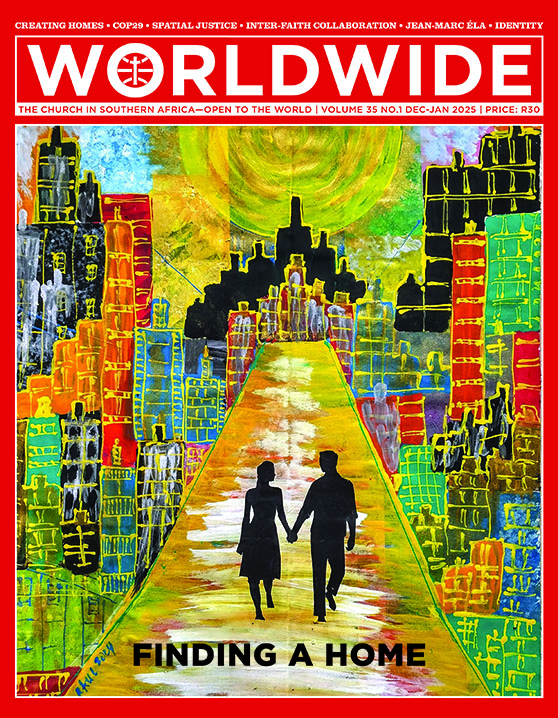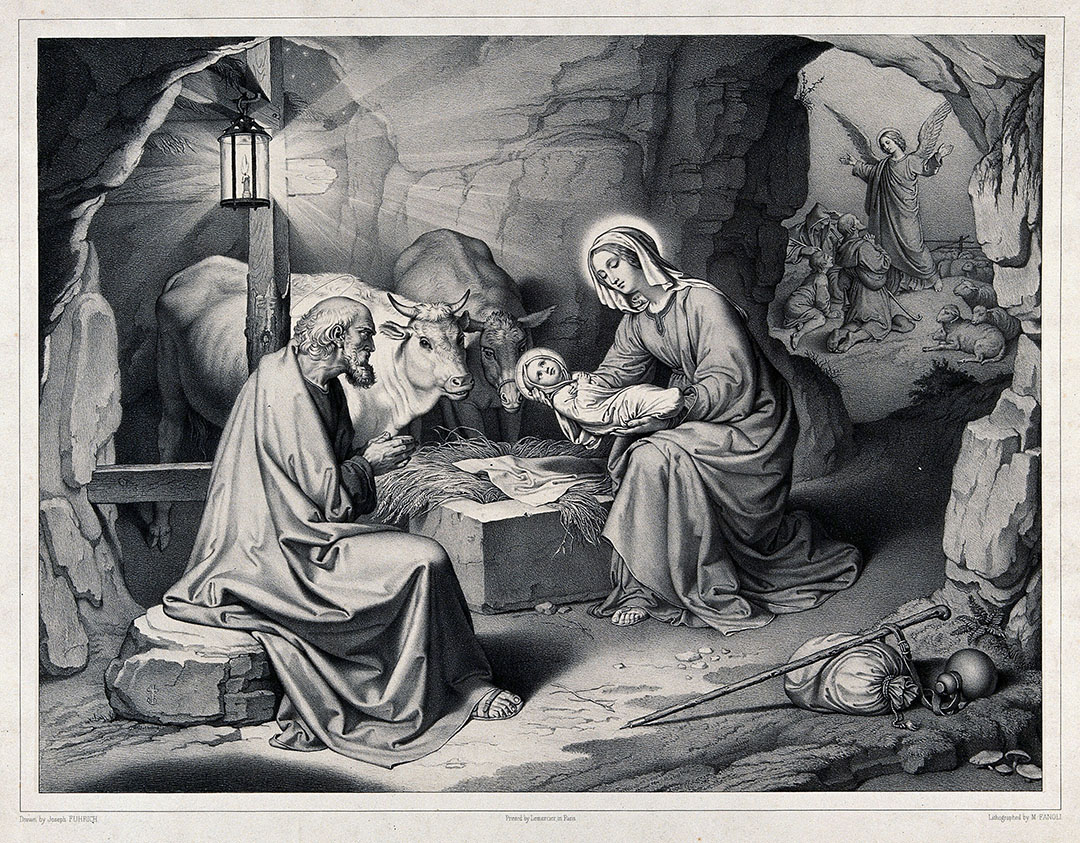
FINDING A HOME
This painting represents the reality of so many people in the world looking for a place to stay, especially as they flock into crowded modern cities, searching for jobs or fleeing from various situations of conflict. The need to create living spaces for them is acute. Like Joseph and Mary, who found no place at the inn, millions of people risk ending up unsheltered in the streets and deprived of a dignified dwelling which they can call home.
Painting by Fr Raul Tabaranza MCCJ
THE LAST WORD • AT THE MANGER

“THERE WAS NO PLACE FOR THEM AT THE INN” (LK 2:7)
BY FR SILVANO FAUSTI SJ | BIBLIST AND WRITER
FROM THE beginning of the 2nd century, the tradition of Jesus’ birth in a cave has been documented. Jesus’ earthly life enfoldes between the mystery of two caves, that of the manger and that of the cross, two episodes evidencing His absolute humility. Here wrapped in swaddling clothes, there in a shroud, here laid in the wood of the manger, there at the wood of the cross.
Popular tradition, taking its cue from Is 1:3, places the donkey and the ox beside Jesus. In the manger, Jesus is born among the beasts, on the cross He will end up among convicts. Mary ‘swaddled’ Him ‘and laid Him down’. God is in need of us. He entrusted himself to Mary’s hands, frail and helpless, wrapped in tenderness here, and in death at the end.
But she lay Him down not at a table, as one who eats, but in the place of what is eaten, in the manger. The bread of angels, the food descended from heaven, which gives life, is laid in the place where the beasts eat. God gives Himself as life and food to sinful man. There is no place but the manger for Him in the katályma, the inn, in the Greek language. This same word will emerge in Lk 22:11, when Jesus gives Himself as food to the disciples at the last supper.
The ‘passionate’ character of the nativity of Jesus appears in these small details. God, who is love and acceptance, is in need of love and acceptance. He finds no place among us except in a place of beasts, in the manger. He finds hospitality in our very sin and need, from which He has come to save us. Whoever will welcome Him there, in remoteness and sadness, in foolishness and hardness of heart, in the evening of the day that always declines, He will welcome him and become his food. As at Emmaus, He will be able to disappear from his eyes, after achieving His goal: to stay with the disciple as his bread.
It is rightly said that Luke is an ‘iconographer’. Indeed, he carefully paints, from birth, the features of Jesus, ‘the image of the invisible God’ (Col 1:15), so that the disciple, reflecting on the glory of the Lord, as in a mirror, may be transformed into that same image (2 Cor 3:18).
Here He gives us the first fundamental signs: humble, insignificant, needy, received in the place where the beasts eat. He comes in our truth, because He loves us. He makes Himself vulnerable to rejection. But He is nevertheless ever-present, as unconditional gift.

